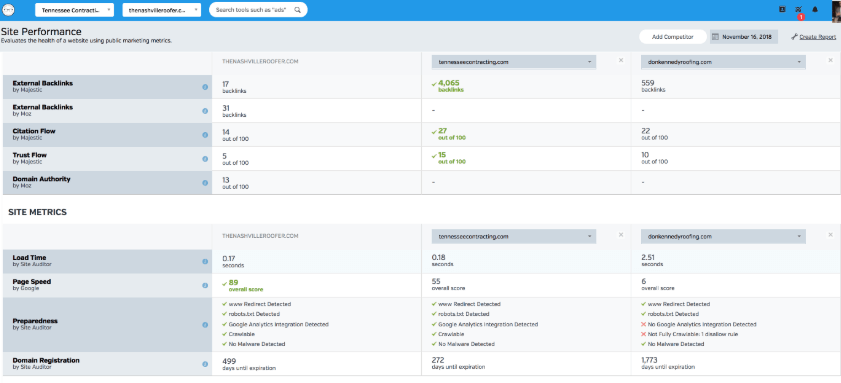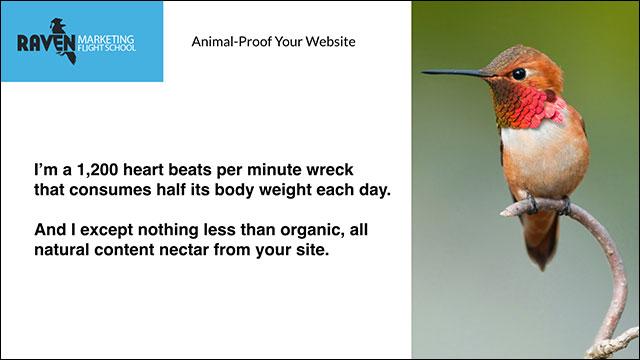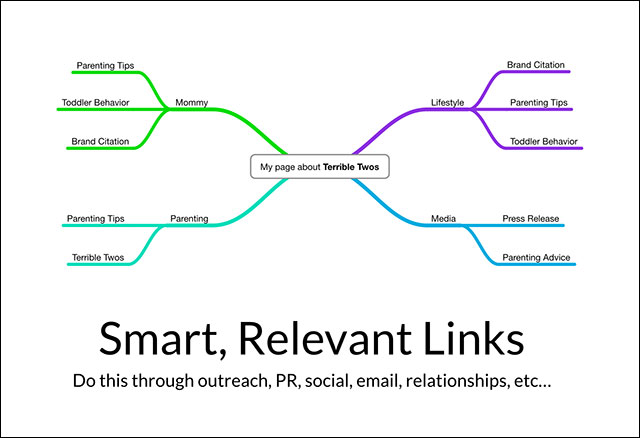This article is adapted from the Animal-Proof Your Website webinar.
I remember when Google algorithm updates were named Bourbon, Vince and Florida. However, since 2011 we’ve been on an animal roll.
While I would have picked more ferocious animals – like mosquito, hippo and Brazilian wandering spider – instead we’ve been subjected to the cuddly-looking panda, cute penguin and sweet hummingbird.
But as any seasoned SEO knows, these are actually the most foul, cruel and bad-tempered animals you ever set eyes on. With a vicious streak a mile wide, they’re killers!
OK, maybe they’re not that bad – unless, of course, you’ve been doing risky and sloppy SEO.
In this post, I’m going to show you how to animal-proof your websites against each of these beasts. The good news is that it’s a lot simpler than you thought, and you can do most of these things directly within Raven’s software.
Panda SEO
The Panda update mainly affects site content – things like low quality content, duplicate content, and content spam. The three best tactics to Panda-proof your site are:
- Find duplicate content: Canonicalize duplicate content or remove it from your site. You can find duplicate content using the Site Auditor.
- Find low traffic content: Review the traffic for your landing pages and find content that isn’t performing well. Then – on an individual basis – decide if the content should be removed, redirected to better content, rewritten or noindexed. This information is available in Raven’s Google Analytics tool.
- Find irrelevant content: If you’ve published content that’s irrelevant to your site and target audience, consider removing it. (A content audit can help you find it). Exceptions include necessary pages, like privacy policy pages. Raven’s Blog Manager can make this process go quickly.
Penguin SEO
Unlike Panda, the Penguin update focuses on link quality. That includes the type of sites that link to you and how the links are implemented (anchor text, etc.). There are several things you can do to combat Penguin-related issues.
- Research backlinks: Perform backlink research on your site and look for low quality sites. You can do this in Raven using Research Central.
- Find toxic links: If the site is guilty of poor link building practices in the past and/or is the victim of negative SEO practices, consider using a service like LinkRisk to find toxic links.
- Disavow links: Most sites won’t ever need to use Google’s Disavow Tool. However, if you have a link from a site that fits the toxic link description above, you may want to submit low quality links to Google just to be safe.
- Diversify your anchor text: With the exception of your brand, it’s important to keep the anchor text of your backlinks diversified. Using a tool like Raven’s Link Manager, find links to pages that may benefit from more diverse anchor text.
Additional tips – not exclusive to Penguin, but related – include seeking out fewer links of higher quality, versus more links of lower quality, and making sure you leverage social media with highly linkable content.
Hummingbird SEO
The Hummingbird update is about speed and comprehension. It’s about Google having a better understanding of what searchers’ intentions are, regardless of whether they use the ideal words in their query. There are several ways to approach Hummingbird from an SEO perspective, which include:
- Write focused content: Write for long-tail search and consider related entities. For example, write very specific content that comprehensively addresses a single question, instead of many answers to a generalized question.
- Use semantic diversity: Instead of focusing on one keyword phrase, use synonyms and related concepts (i.e. use a thesaurus). This will help Google better understand your content and thus increase the chances of it being presented in the SERPs.
- Build smart, relevant links: This isn’t necessarily specific to Hummingbird, but the reasons for doing it are related. Hummingbird is about semantic comprehension of diverse, but related entities. The sites that link to your pages can help amplify the meaning and authority of your content. So be diverse and strategic in your link building efforts.
Use these techniques – along with a continued focus on site speed, engagement, structured data and algorithm signals – to survive whatever wild animals of Google bring.
Missed a step? Want more detail? View the whole webinar:

With the Competition Research tools from Raven Tools, you’ll see what methods your competitors are using and be able to strategically take your own website to the top.









I think is very interesting to test Find toxic links: or any similar tool, I have never used any of that kind of tool in the past to check some of my links campaigns. Please any can suggest any free tool with similar futures?
Good information on updates and how to overcome them and also he tools that have been mentioned might help in more aggressive recovery.
Thanks for reading!
must be write something about Zebra update,,
Hi Jon!
Excellent information about these updates! I totally agree with you, for us not be penalized by Hummingbird, we need not to focus on one keyword phrase instead we need to use synonyms and related concepts. This will definitely help Google understand our content and so increase the chances of it being presented in the SERPs.